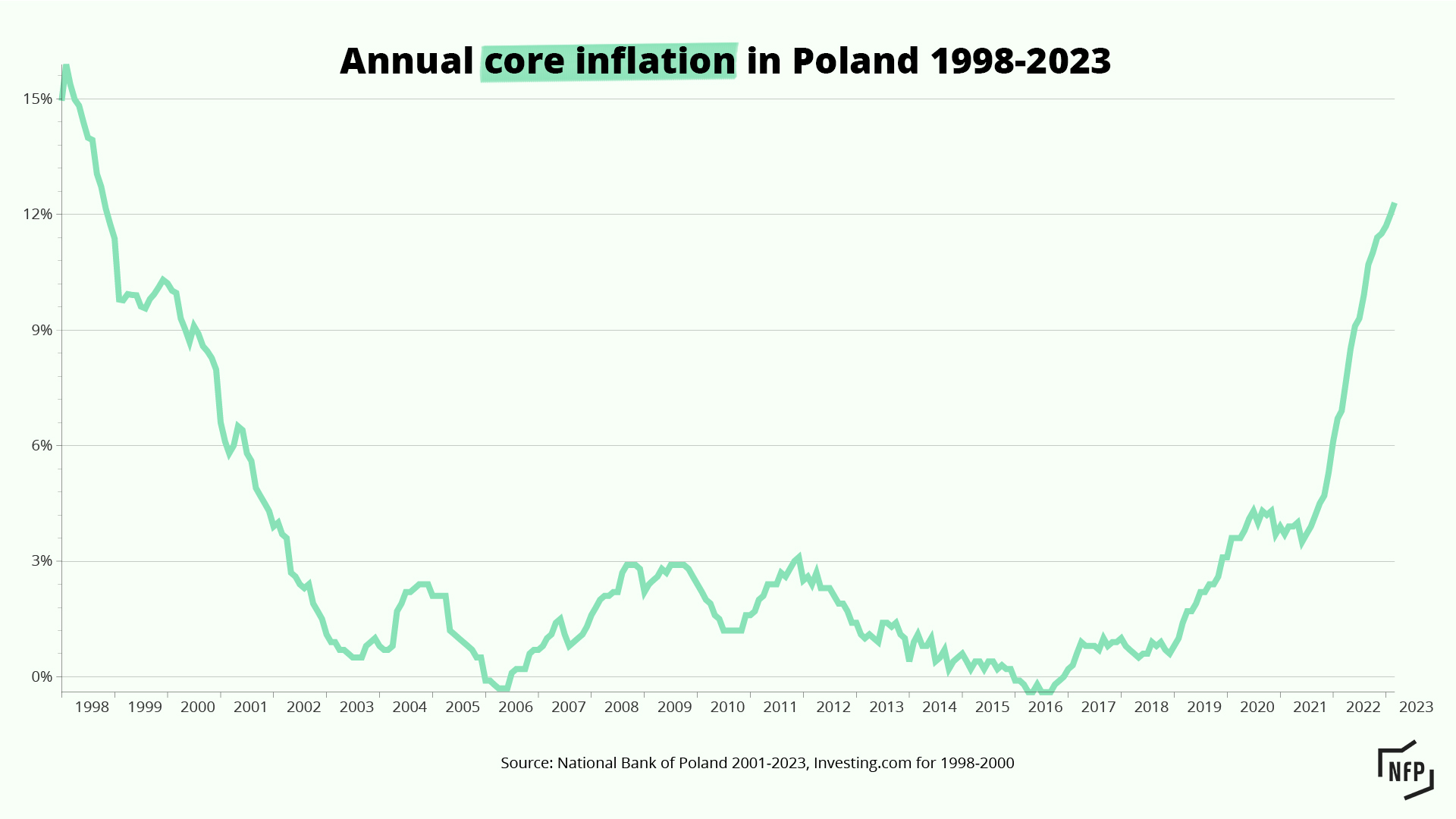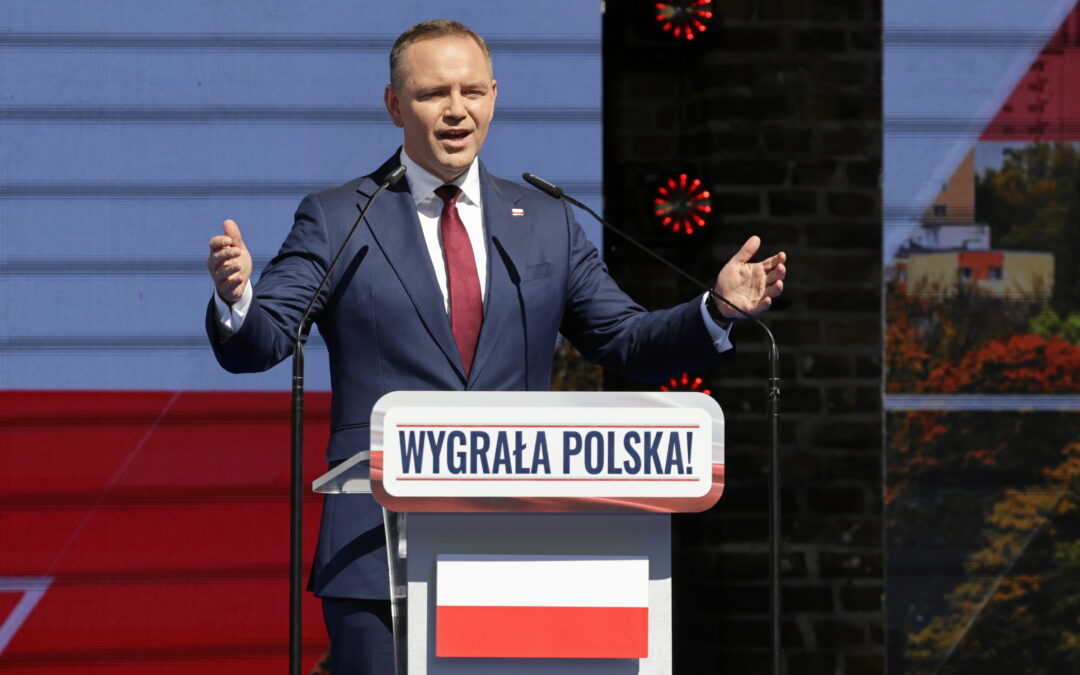While Poland’s headline inflation figure recently began to slow, core inflation – a measure that excludes goods with the most volatile prices, such as fuel and food – has continued to accelerate, reaching a new high in March.
The latest figures, released by the National Bank of Poland (NBP), show that core inflation hit 12.3% year-on-year in March, up from 12% in February and the 22nd consecutive month in which core inflation has accelerated. It is now at its highest level since 1998.

By contrast, the main inflation figure fell in March to 16.1% from a 26-year-high peak of 18.4% in February. It is forecast to continue to slow down over the coming months.
Core inflation is, however, seen to represent a more accurate indicator of underlying long-run inflation and of prices that can be influenced by monetary policy, given that fuel costs are largely set on international markets and food prices are dependent on seasonal factors.
“Core inflation reacts more slowly to shocks than the consumer price index, it is a more spread-out process over time,” says Bartosz Sawicki, an analyst at currency exchange website Cinkciarz.pl. “The passing on of cost increases to consumers continues.”
Annual inflation in Poland slowed to 16.2% in March, down from its 26-year-high of 18.4% in February and reaching its lowest level since September 2022.
The March reading was, however, above economists' expectations of 15.9% pic.twitter.com/5q9sOx4jyh
— Notes from Poland 🇵🇱 (@notesfrompoland) March 31, 2023
Grzegorz Maliszewski, chief economist at Bank Millennium, notes that the proportion of companies reporting that a lack of demand is hurting their business is lower than the long-term average in almost all sectors of the economy, despite the slowing economy. That allows them to keep prices high.
Sawicki expects core inflation to peak in the current quarter (i.e. by the end of June) but to still remain in double digits “for the next few months.”
“By the end of the year, core inflation will be above 8% year-on-year and consumer inflation could remain dangerously close to double-digit figures,” he says.
Inflacja bazowa na nowym szczycie 12,3% r/r. Dlaczego firmy podnoszą ceny? Bo mogą! Tak powiedział jakiś czas temu J. Powell. Gospodarka 🇵🇱mocno hamuje ale… odsetek firm dla których brak popytu to bariera rozwoju jest niższy niż średnia w prawie wszystkich sektorach gospodarki. pic.twitter.com/vLfnJPtngU
— Grzegorz Maliszewski (@gmalisze) April 17, 2023
Main image credit: Pepco Comms/Wikimedia Commons (under CC BY-SA 4.0)

Alicja Ptak is senior editor at Notes from Poland and a multimedia journalist. She previously worked for Reuters.




















